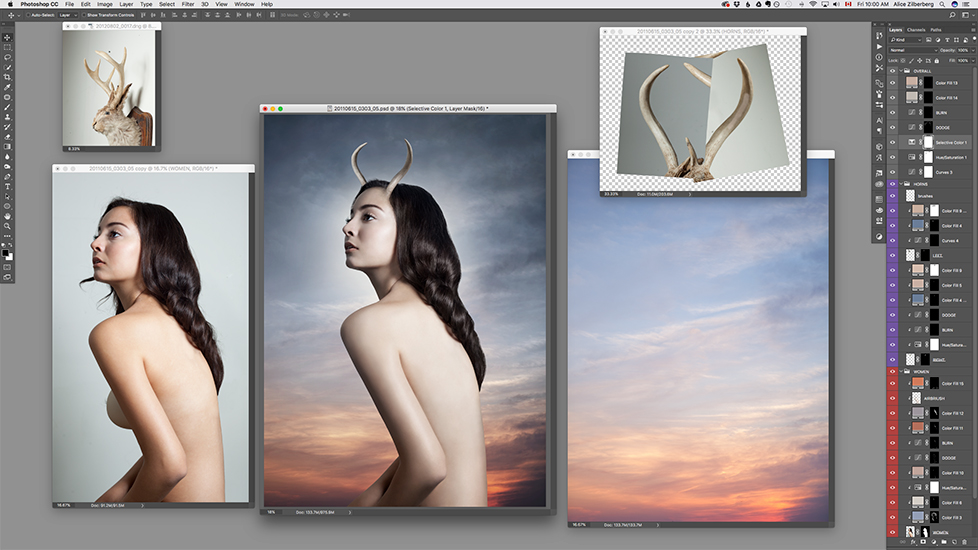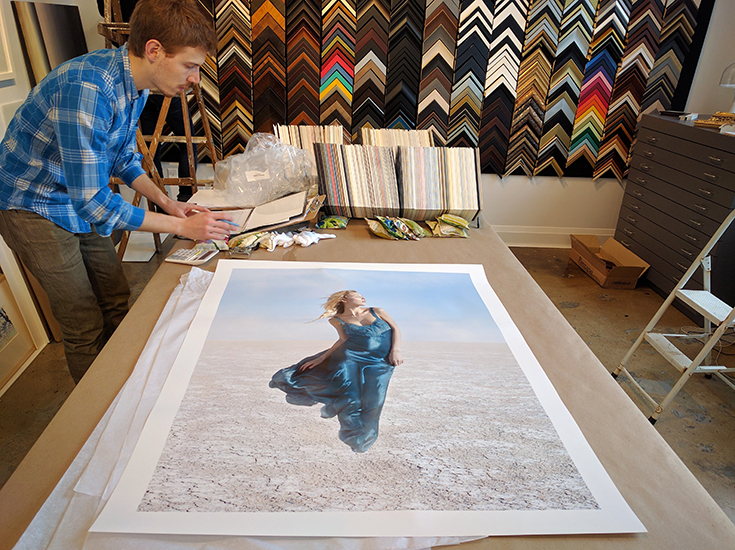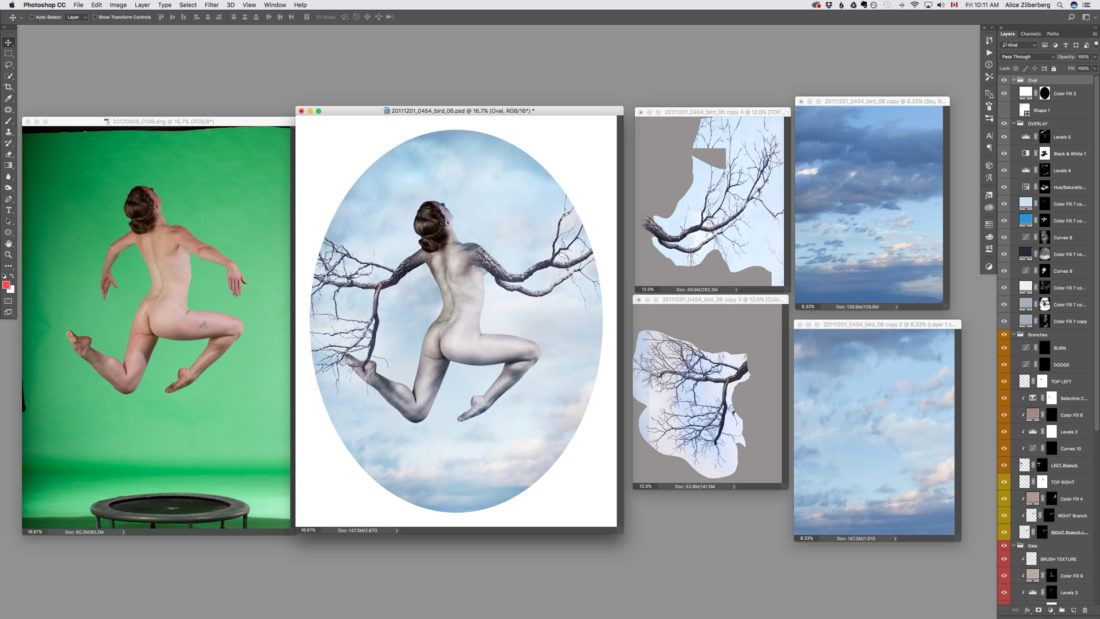Creative Process Breakdown
A lot of people approach me and ask about the creative process of my art photography. In this post I outline my work process.
Every project is unique and I typically take one year to complete a body of work.

Getting inspired
If you enter “my creative process” into a web browser, most descriptions start with “I come up with an idea and then…,”. I want to start before that. Where do I get the idea in the first place?
So many different sources in my life help me to generate ideas. Sometimes I’m inspired by art and photography, and sometimes my ideas come from something completely different. Books, podcasts, travel, art galleries, friends, and going for a walk around the block are all potential sources. The complete artistic concept rarely comes in one piece. Many times, half-ideas I’ve thought of in the past merge with new ideas to create something innovative.

Keeping a record
I keep an inspiration images folder on my computer of art that I see online or in galleries. Some of the images go into subfolders for different art projects I’m starting. I also maintain a list of visual ideas that I want to try in Evernote. I make myself add 10 ideas a day to this list. For example, I might write, “I want to shoot something focused on women’s hair.” This thought might incubate until some other ideas come along that complete it.
Doing Research
I like to always tell a story with the artwork. After I have an idea, the next step is to do some research. I take the story stem I have and look at other artists who have explored the same area, read about the topic, talk to people who know about it. All the pieces of information stew in my project soup until it’s clear what I’m trying to do.
Making Preliminary Sketches
The next step in the creative cookbook is doing some sketches and tests of the idea to see if it will work. I often use paintings as inspiration for my art, and the conversion to photography can be difficult sometimes. I might create a quick photo-manipulation with images from the Internet to see what I need to add, change, subtract.

Finding a Location
I pick locations that fit my themes. I often travel outside of Canada to find the right background.
When traveling, it could be quite difficult to find a spot on the day of the shoot while my models and team wait. A day of location scouting is needed to find the exact spot that fits the photo-shoot. I take some photos, upload them, and review them. I make sure to schedule the shoot on a day that the weather is on my side.
Finding the right Model
Just like a location needs to be handpicked, so does the model. I first outline the specifications of what I’m looking for. For the Goddess Almighty series, I needed a dancer. I needed someone who had a normal woman’s body to support my vision. A small ballerina could have made the image look like a fashion shoot. I look for my perfect model using model agencies, Model Mayhem, friends, and Facebook.
Completing a Test Shoot
For big projects that require the model to be shot on location, I will often do a test shoot. It could be quite disappointing to organize a team and find out that the visuals need to be changed. I go to the location and test the lighting on a test model. I then upload images again and test the photo-manipulation.

The photo-shoots
The method and timing is unique for every project. I take different images in different locations and combine all the elements together. I often shoot the background first, followed by the model, and any other elements in the studio to match the lighting later.

Computer illustration
When I’ve done all my photoshoots, I select the best images. My style is surrealistic and requires a lot of image compositing, photo manipulation, and digital painting. This process can weeks, or even months.

Reviewing the Work
After I finish working on a piece, I put it away and take a break from it for a few days. I do so because I want to look at the piece with a fresh eye, and maybe notice final touches that are hard to see after working on a piece for a long time.
Printing process
Once the artwork is done, I do some more work.
I have to ensure that what I created looks good printed and framed. There are many options for fine art and print based artwork. I can print on different surfaces like acrylic, or metal, or a variety of different papers in different sizes, and using various frame types. Those decisions are made based on what’s best for the artwork and what I’m trying to communicate. I always make sure that the paper I’m printing on is archival and acid- free, to ensure the print lasts forever and ever.




